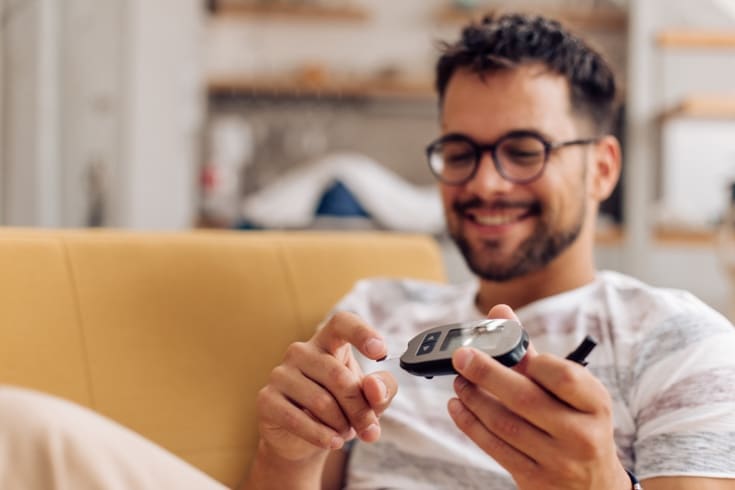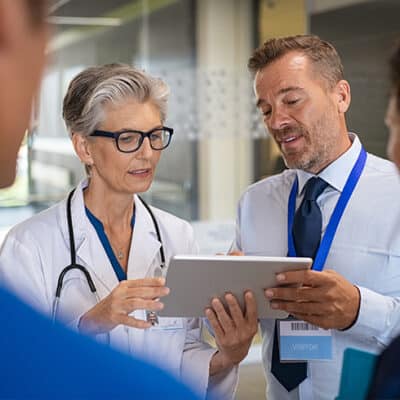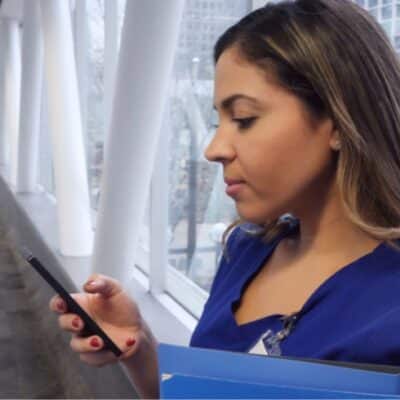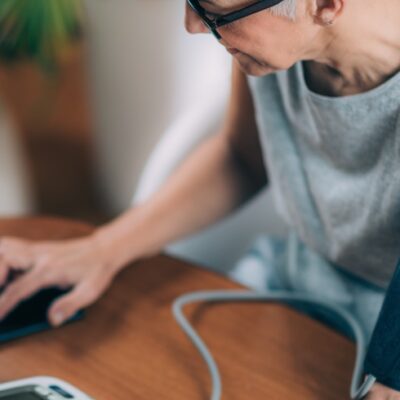Remote patient monitoring (RPM) has moved toward the forefront of the post-COVID healthcare landscape. What should physicians know about RPM, and how can they prepare their practices to best use RPM services to assist with patient care? To dispel the myths of RPM, we have gathered some helpful facts on how it can benefit medical practices and improve patient health outcomes by bridging the gap between the office and the home.
What is remote patient monitoring?
Remote patient monitoring is a delivery method that helps healthcare providers monitor patients’ vitals outside of a traditional clinical setting. This technology securely transmits health information between patients and providers to enable easier access to care, more informed clinical decision-making, earlier interventions, and better health outcomes. Although occasional visits to the office a couple times a year may provide a glimpse into a patient’s overall health, RPM collects data more regularly, even daily, which helps providers to identify trending health issues. This direct access to patient health data empowers more effective and proactive care management.
How did the pandemic change how patients and providers are approaching RPM post-COVID?
In the spring of 2020, many medical offices were closing or unable to provide office visits for patients. Additionally, healthcare providers needed a way to care for their patients while generating revenue, as many offices were offering limited services and facing staffing shortages. RPM allowed physicians and patients a way to bridge that gap, and it is now woven into the fabric of care. Today, more than half of medical practices use remote physiological technology to virtually monitor patients’ vital signs at home.
What conditions are monitored with RPM devices?
RPM devices include blood pressure cuffs to monitor hypertension, glucometers to measure blood sugar levels, digital scales that assist with weight management, and pulse oximeters that help monitor patients with COPD, COVID-19, or other pulmonary diagnoses.
How can providers help ensure patient adherence?
Keeping patients engaged is critical to adherence to the care plan. The 100Plus AI-enabled RPM platform helps keep patient engagement and adherence at the forefront through its AI-virtual health assistant. Patients enrolled in the 100Plus RPM program receive smart text-based communications on behalf of the practice reminding them to take their readings and providing education and support. This helps increase adherence and leads to higher patient retention, which helps ensure the success of a program. Practices that implement 100Plus AI outreach have seen over a 2X increase in the RPM adoption rate among enrollments.
Are senior patients comfortable with remote monitoring technology?
One myth is that senior patients are not comfortable with technology. However, a survey from AARP revealed that three out of four individuals aged 50-plus rely on technology to stay connected. In addition, more than 90% of our enrolled patients, whose average age is in the mid-70s, use their RPM devices with ease and receive text communications on their smartphones. Since our devices are simple to use, cellular based, and require no set up, this convenience also drives adherence.
What role does RPM have in lowering healthcare costs and reducing readmissions?
RPM bridges the gap between patients and providers in between office visits by delivering physiologic health data and insights that make it possible for providers to identify potential trends and intervene when necessary. This results in earlier interventions, fewer hospitalizations, better outcomes, lower costs, and ultimately healthier, happier patients.
Start The Path Toward Better Patient Care
Have questions about how remote patient monitoring for healthcare will work for you and your patients? Let’s have a conversation.



